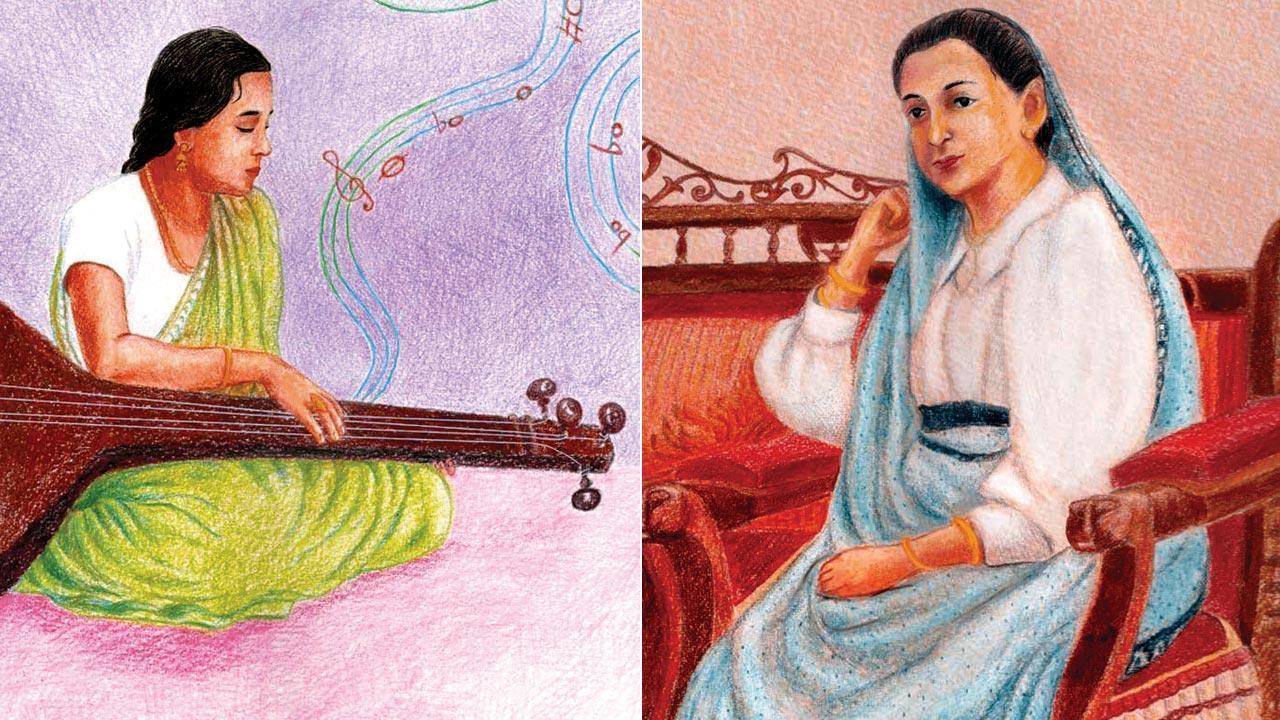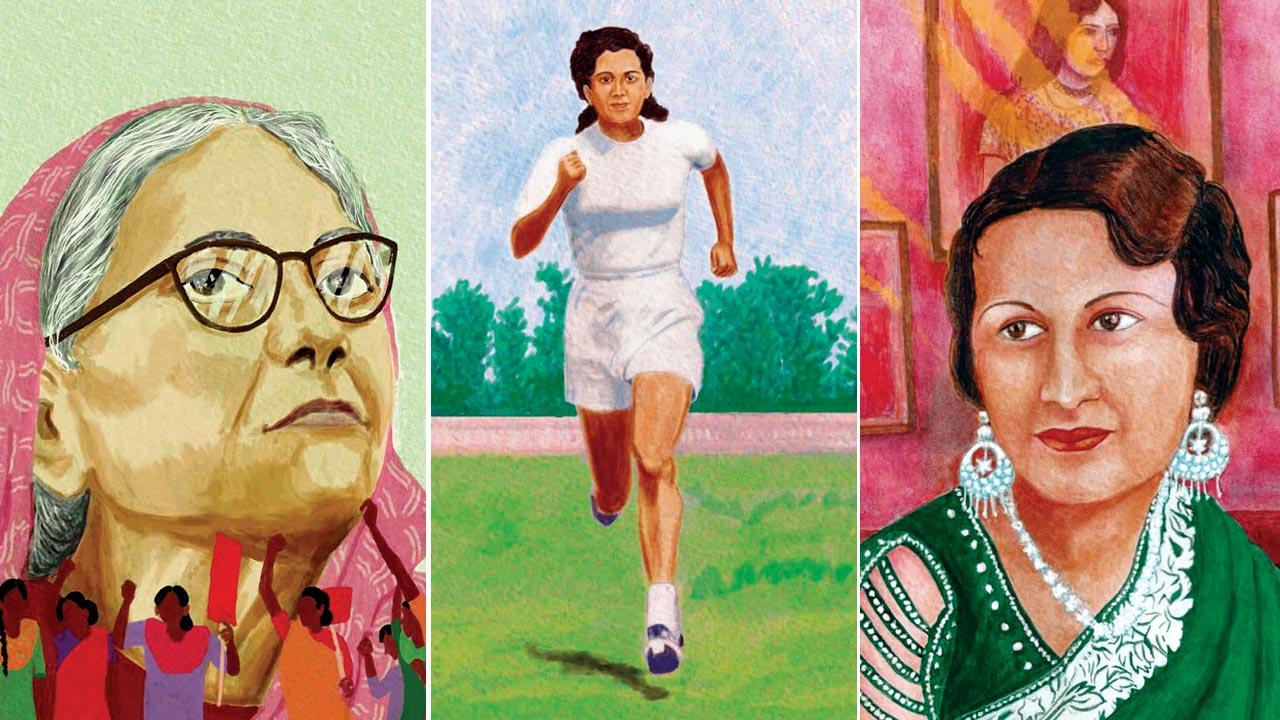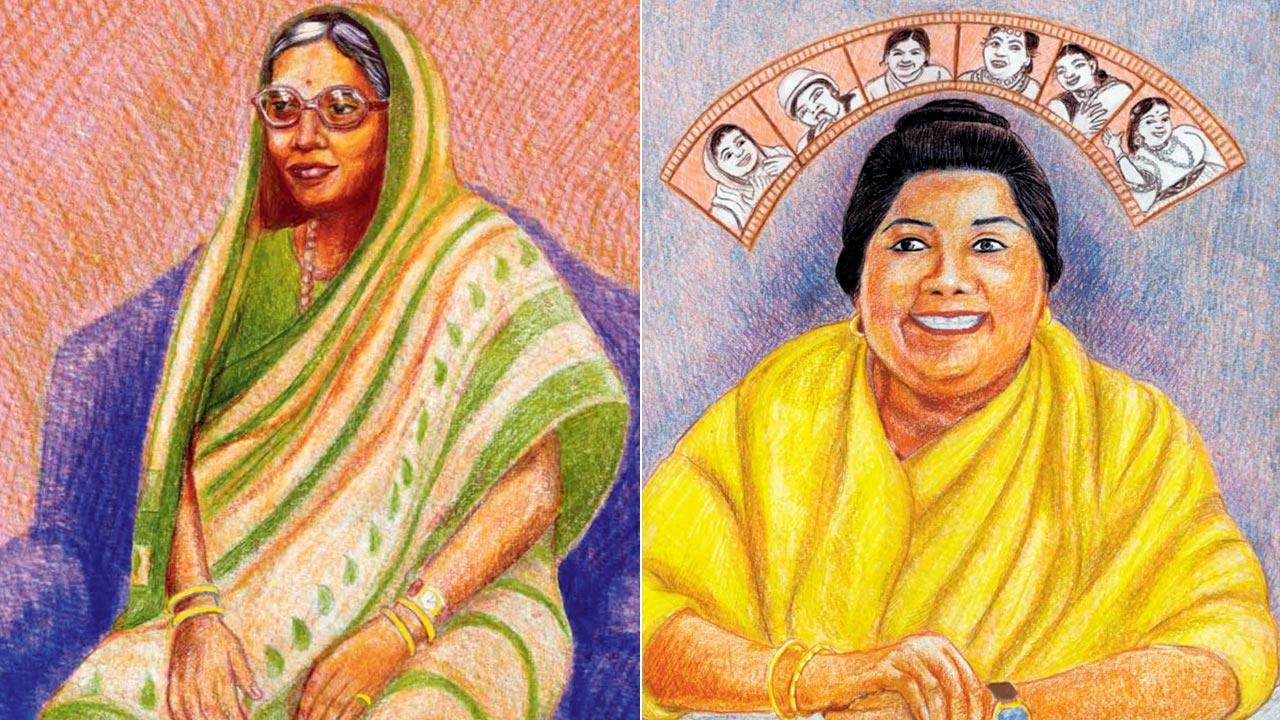We learnt some extraordinary things about these special women who hailed from erstwhile Bombay and the rest of Maharashtra, thanks to a new book that celebrates their life stories of resilience and courage as they broke new ground

Bai Jaddanbai; (right) Bhikaji Cama. Illustrations Courtesy/Mistunee Chowdhury, Harpercollins india
A star Named Bibha and Other Stories (HarperCollins), by Anwesha Sengupta, Supurna Banerjee, and Sumantini Mukhopadhyay, is a new collection of short biographies of 30 women, who challenged the socio-cultural norms existing in India, during the late 19th and mid-20th century. It’s a little history of India told through its women, packed with gorgeous illustrations by Mistunee Chowdhury.
ADVERTISEMENT
We bring you seven fascinating facts that we learnt through the book.
1 In 1907, Bhikaji Cama, a Parsi woman from Bombay, designed the earliest version of the Indian national flag. She carried her flag to a conference in Stuttgart, Germany, where several politicians had gathered from countries under colonial rule. It bore three colours: green, saffron, and red, to celebrate the many religions followed by people in the country. It also had the words ‘Vande Mataram’ written on it.
2 Initially, theatres did not hire women actors; women’s roles were played by men. Durgabai Kamat and her daughter, Kamlabai, became the first Indian female actors to be cast in a film. Durgabai was from a Marathi Brahmin family and trained in music and dance. She left her abusive husband to make a life for herself and feed her child. That’s when she joined the Chittakarshak Natak Company. On their tour to Nashik, she was discovered by Dadasaheb Phalke who had been looking for females to play Goddess Parvati and her daughter Mohini in his new film.
 Parbatibai Bhore; Mary D’Souza Sequeira and Durgabai Kamat
Parbatibai Bhore; Mary D’Souza Sequeira and Durgabai Kamat
3 Even though Bandra girl Mary D’Souza Sequeira didn’t have much support from her family or a girl’s playground to practise on, she worked day and night to become one of the best sprinters and hockey players in the country, and soon an Olympian representing India in 1952. At the Asian Games in Delhi in 1951, she had already won two medals at the track events. For the Helsinki Olympics, she had to raise funds to support herself. She managed to do so by teaching and with the help of her friends.
4 In the 1940s, after the arrest of leaders Ranadive and Dange, Parbatibai Bhore, a textile worker, led the strike by workers of Bombay against unjust owners of textile mills. The union asked for respectable wages for their labour and fair price shops where they could buy things at subsidised rates. Even though she faced resistance at every stage in her life as a Dalit, she continued to stand up for the rights of women, especially women workers.
 Shantabai Kamble and Uma Devi Khatri AKA Tun Tun
Shantabai Kamble and Uma Devi Khatri AKA Tun Tun
5 Bai Jaddanbai was a woman of extraordinary talents. She was a film director, producer, and an actor. But she was most celebrated for her voice. She wrote her own poems, sang her own songs, and composed her own music. She travelled across the country to sing in the royal courts of the rajas of several states. When the first Indian talkie, Alam Ara was made in 1931, and songs began to be added to films, she was in great demand. Later, she opened her own company called Sangeet Studio, becoming one of the earliest female composers to contribute to cinema, and produced films like Madam Fashion (1936) and Jeevan Swapna (1937).
6 Shantabai Kamble’s autobiography is the first one to be written by a Dalit woman. She had a troubled childhood while growing up in Solapur, where she was laughed at in school for wearing worn-out clothes, and not allowed inside her friend’s home. She was hardworking and continued her studies, took a teacher’s training course, and then taught in schools. She was deeply inspired by Dr BR Ambedkar’s ideas after meeting him and also converted
to Buddhism.
7 Uma Devi Khatri, known by her screen name Tun Tun, became the first Indian comedienne after getting a role in Dilip Kumar’s Babul (1950). She had a great sense of humour, but was given only certain kinds of roles most of the time, often portraying an overweight woman with dreams. While that scenario seemed funny to the audience of the time, she fought the stereotypes of dainty women in the industry with charm and added nuance and life to her roles. Before she acted, she also sang in Naushad Ali’s film Wamiq Azra (1946), fulfilling her childhood dream.
Available Leading bookstores and e-stores
 Subscribe today by clicking the link and stay updated with the latest news!" Click here!
Subscribe today by clicking the link and stay updated with the latest news!" Click here!












